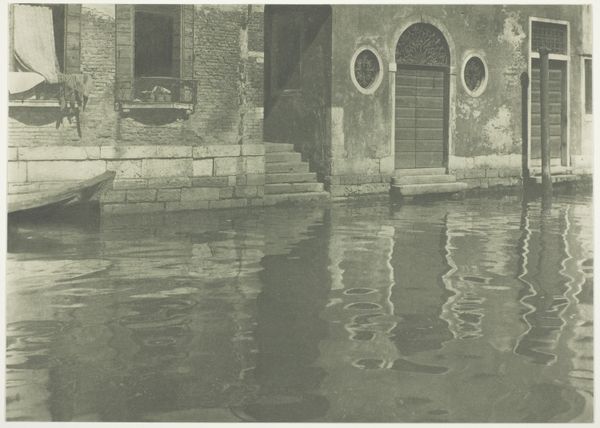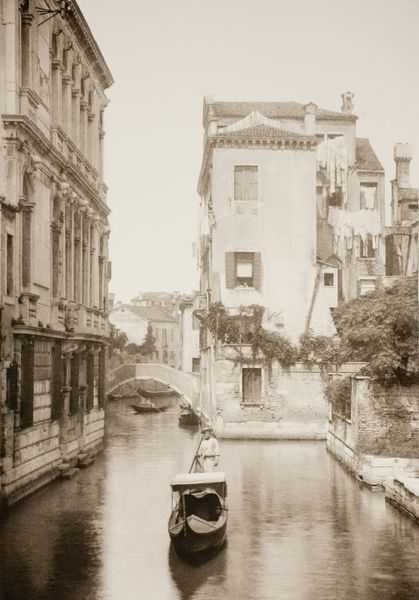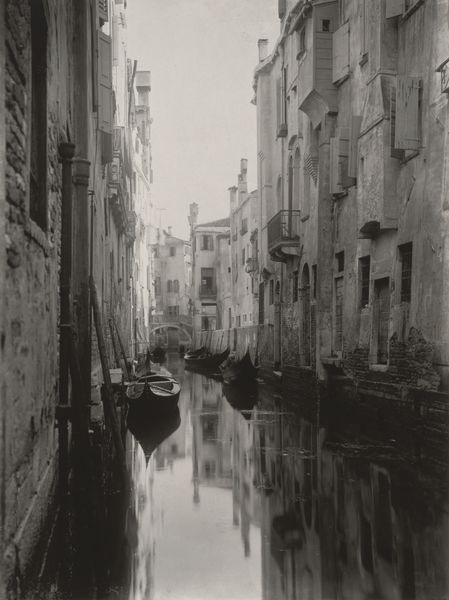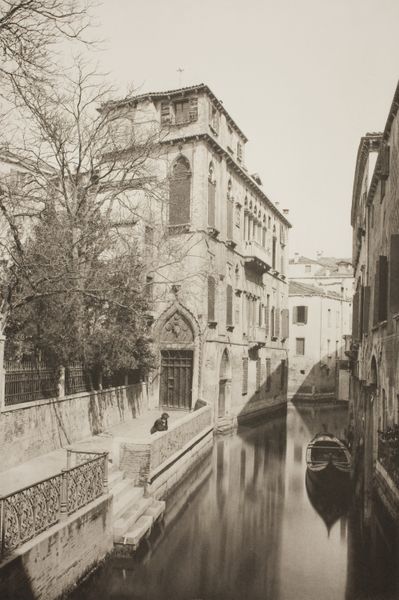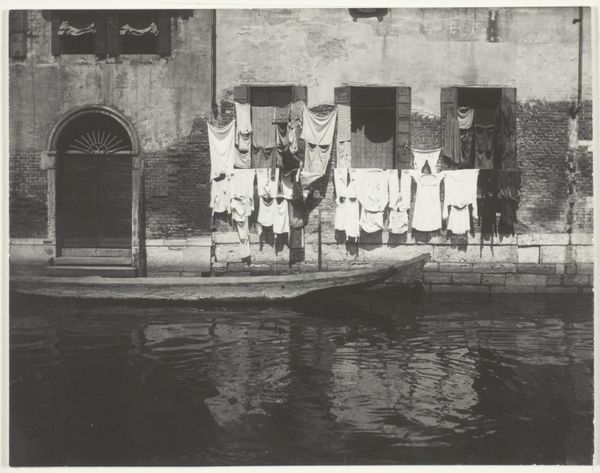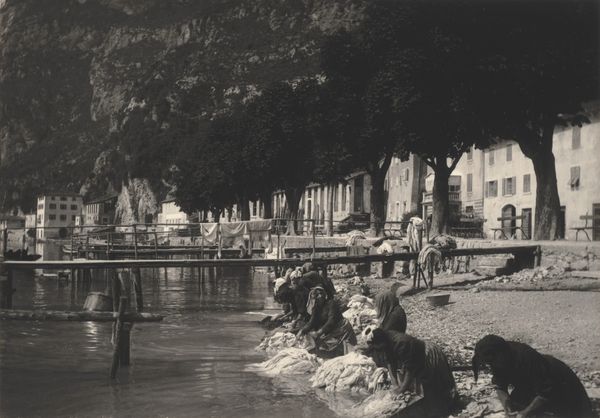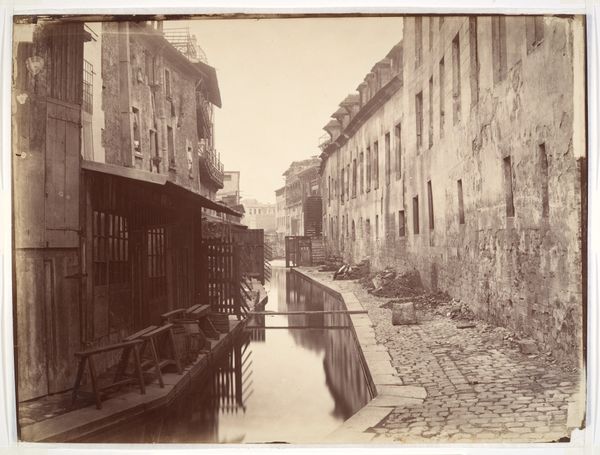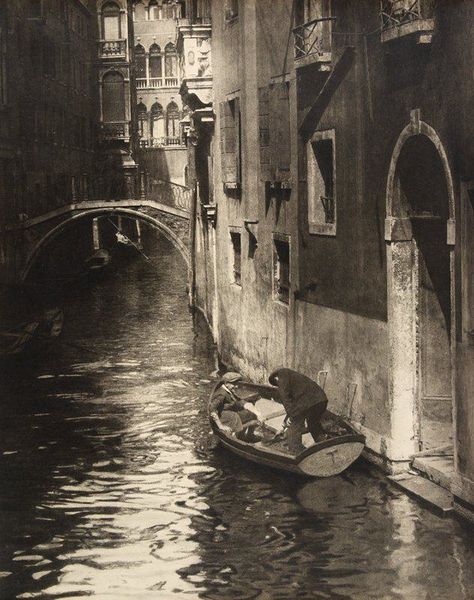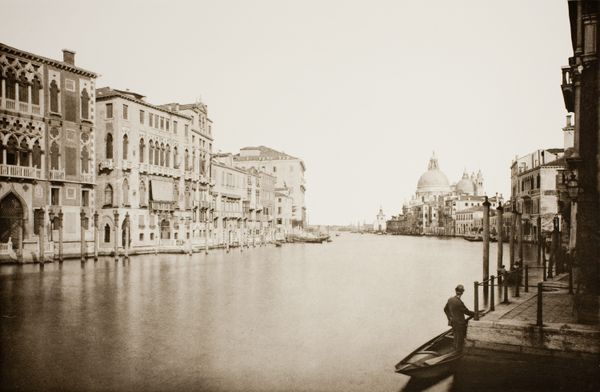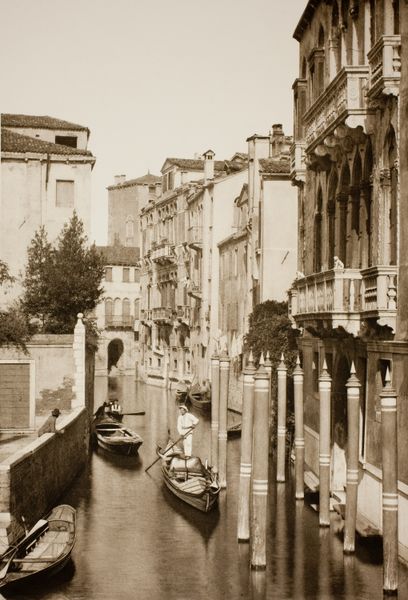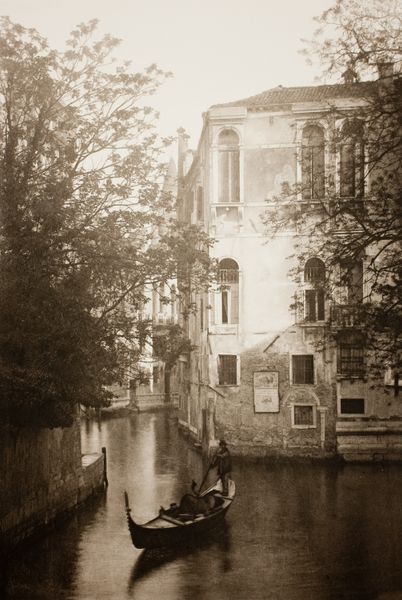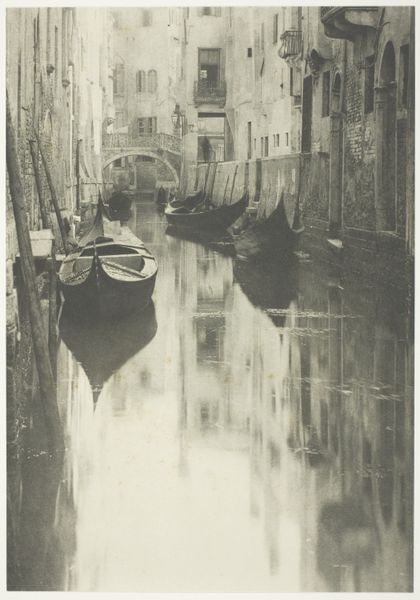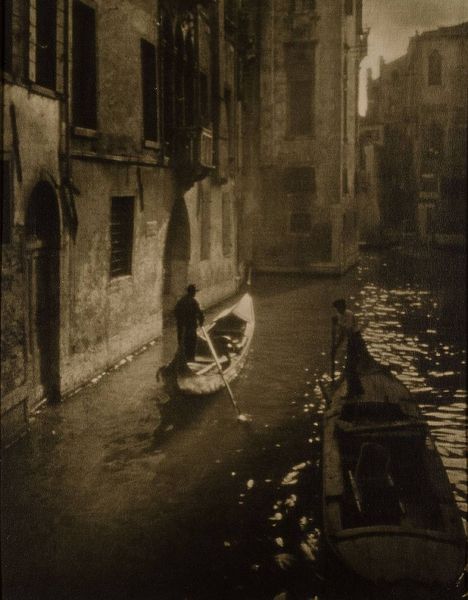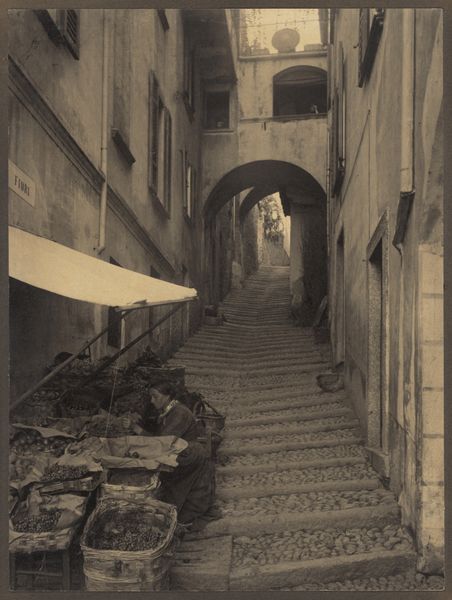
Dimensions: sheet (trimmed to image): 9 x 11.6 cm (3 9/16 x 4 9/16 in.) mount: 34.2 x 27.6 cm (13 7/16 x 10 7/8 in.)
Copyright: National Gallery of Art: CC0 1.0
Curator: This is Alfred Stieglitz's "Venice," a photograph taken sometime between 1894 and 1934. It's a striking example of his urban landscapes. Editor: It's captivating! The texture of the old buildings and the reflections in the water are so soft, so painterly, even though it's a photograph. The monochrome palette really enhances that moody, almost ethereal quality. Curator: I think part of what makes this image so successful is the way Stieglitz is using the relatively new technology of film to create something that engages with the established artistic movements of the time. Pictorialism was all about elevating photography to the level of painting, through manipulation of the image and careful attention to composition. He would’ve certainly considered the labor involved in making and printing photographs back then. Editor: And you can certainly see that aesthetic at work here, this artistic ambition. Look at how the photograph captures the romantic view of Venice! At this time, Venice was turning into a must-see location for the well-to-do and artists like Stieglitz; this image contributed to its constructed, iconic image. The scene is framed to make you consider not only the architectural achievements and culture, but also its slow decay. Curator: Precisely. The materiality speaks to that decline. See how the brickwork seems softened by the water itself. Stieglitz uses the grain of the photographic process and the texture of the subject matter to convey the tangible realities of urban life – its impermanence. Editor: Yes, and it becomes something available to be purchased. Tourism generated income and was essential to Venice. Its depiction through Stieglitz's work can be viewed in connection to broader shifts in travel culture during this period and what that entails economically for the residents themselves. Curator: That connection to commerce is unavoidable. The sale of such photos fed back into supporting the arts as an institution, especially as photography was becoming a viable artistic profession. It closes a whole loop of production, really. Editor: I am captivated by how his romantic, soft treatment contributes to our understanding of the city’s history and how the industry shaped Venice’s public image during this pivotal era. Curator: Absolutely, and through careful composition and an understanding of the photographic process, Stieglitz leaves us thinking about both the artistic merit and the inherent materialism in capturing a city.
Comments
No comments
Be the first to comment and join the conversation on the ultimate creative platform.
